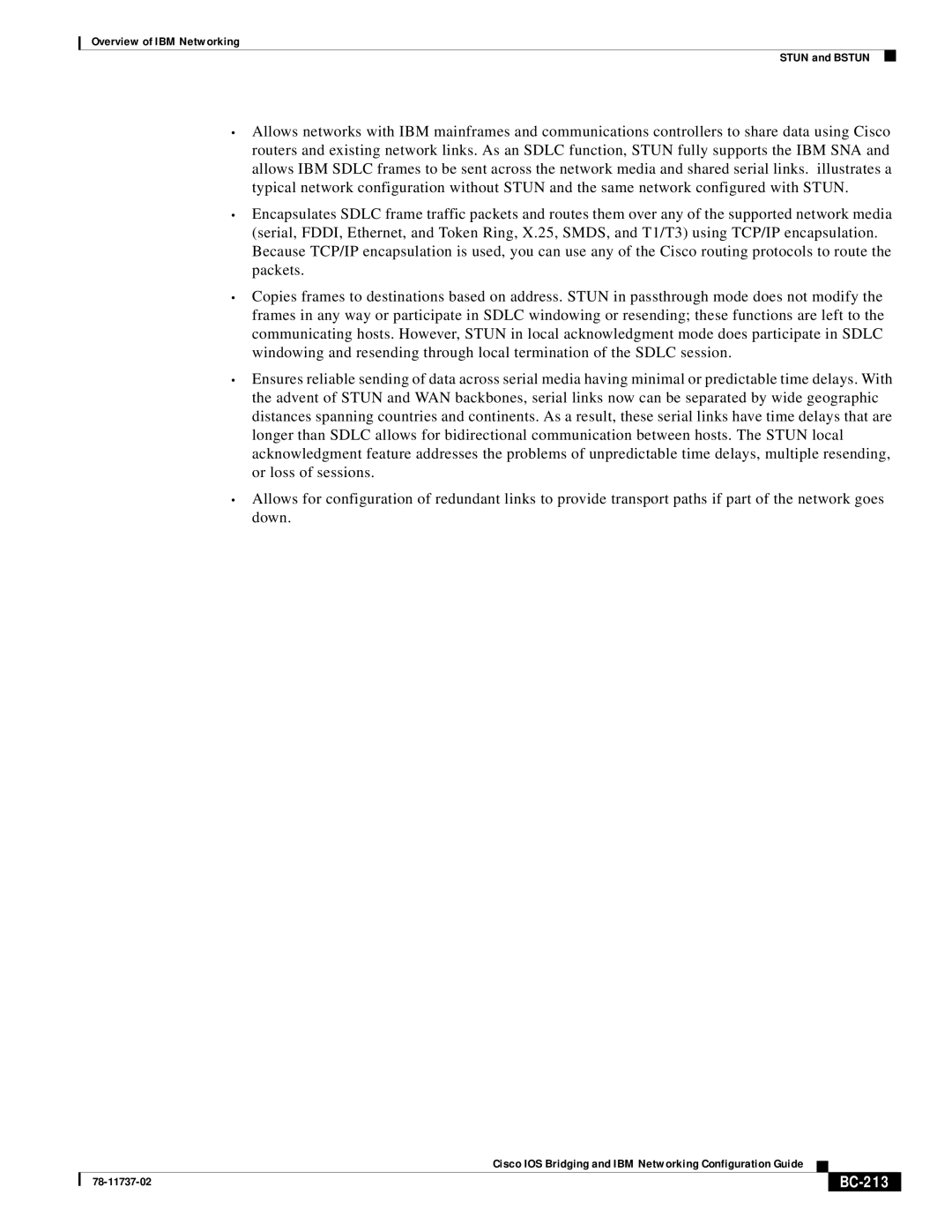Overview of IBM Networking
STUN and BSTUN
•Allows networks with IBM mainframes and communications controllers to share data using Cisco routers and existing network links. As an SDLC function, STUN fully supports the IBM SNA and allows IBM SDLC frames to be sent across the network media and shared serial links. illustrates a typical network configuration without STUN and the same network configured with STUN.
•Encapsulates SDLC frame traffic packets and routes them over any of the supported network media (serial, FDDI, Ethernet, and Token Ring, X.25, SMDS, and T1/T3) using TCP/IP encapsulation. Because TCP/IP encapsulation is used, you can use any of the Cisco routing protocols to route the packets.
•Copies frames to destinations based on address. STUN in passthrough mode does not modify the frames in any way or participate in SDLC windowing or resending; these functions are left to the communicating hosts. However, STUN in local acknowledgment mode does participate in SDLC windowing and resending through local termination of the SDLC session.
•Ensures reliable sending of data across serial media having minimal or predictable time delays. With the advent of STUN and WAN backbones, serial links now can be separated by wide geographic distances spanning countries and continents. As a result, these serial links have time delays that are longer than SDLC allows for bidirectional communication between hosts. The STUN local acknowledgment feature addresses the problems of unpredictable time delays, multiple resending, or loss of sessions.
•Allows for configuration of redundant links to provide transport paths if part of the network goes down.
|
| Cisco IOS Bridging and IBM Networking Configuration Guide |
|
|
|
|
|
| |||
|
|
|
|
| |
|
|
|
|
